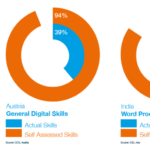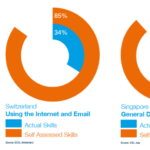GAP BETWEEN PERCEPTION AND REALITY OF DIGITAL SKILLS HOLDING PEOPLE BACK
Poor digital skills hold back individuals and businesses. Research carried out by Lloyd’s Banking Group in the UK recently found that 1.6 million businesses in the UK lack digital skills, and that this can lead to time wasted and decreased turnover. Studies into the cost of time lost to poor digital skills in the Netherlands showed that the country’s economy could be losing more than €19 billion a year. On a human scale, access to essential government services, from filing tax returns to registering a change of address or claiming benefits, increasingly relies on people’s abilities to use computers.
It is undeniable that poor digital skills put people at a disadvantage. But what isn’t so widely understood is the gap between people’s understanding of their digital skills, and the reality. ECDL Foundation partners in five countries in Europe, as well as ICDL Asia in Singapore and ICDL India, have researched this question, using a combination of self-assessment questions and follow-up practical computer tests. Their findings are published in a new report, Perception & Reality: Measuring digital skills in Europe, India and Singapore.
The studies found that, no matter which country the research was done in, people routinely overestimate their own digital skill levels. The problem is also notable among younger groups, which are often seen as innately capable of using technology, and gaps between perception and reality of skills exist even in very digitally developed countries.
While a psychologist might be able to begin to explain why people overestimate their skills, it is clear from the research that people certainly do overestimate their skills, sometimes quite significantly. In each of the studies, which were conducted in Austria, Denmark, Finland, Germany, India, Singapore and Switzerland, participants were asked to rate their skills in several areas of digital competence. These included word processing, spreadsheets, using the web and email, and working with files and folders, among others. Then, the participant’s real skill levels in these areas were tested using practical tests based on ECDL.

In some areas, the gap between participants’ perception of their own skills, and the reality was marked. For example, in Austria, 94% of participants rated their general digital skills as ‘average’ to ‘very good’. Just 39% actually reached that level in practical testing. In the Indian study, 84.6% of participants rated their word processing skills as ‘fair’ to ‘excellent’, while only 48.5% really performed that well.
As well as significant digital skills gaps, the research has also provided a unique snapshot of a global problem. No matter where the research has been conducted, similar gaps in digital skills have been found. This held true, even in countries like Singapore, where 88% of people have internet access at home. 88.5% of participants from Singapore rated their general digital skills as ‘fair’ to ‘excellent’, but only 55% achieved that level.

In short, we are faced with an increasingly digital society, but a large part of the population that doesn’t know it is lacking the skills to thrive in that digital society. Thankfully, the research revealed some good news: data from Austria, Germany, Switzerland and Singapore shows that people with ICT certification score significantly better than participants without certification. Certification serves two purposes in this context: it validates the quality of training by proving that participants have actually taken in what was taught, and it provides a structured and objective measure of the skills that are important in a particular area.
We might be facing a significant digital skills gap that could leave people behind as society becomes more digital, and many people might find themselves surprised to be left behind, but the answer–training and certification–is simple. If these studies achieve only one thing, it should be to show that, now more than ever, we need to invest in everyone’s digital skills.
Tags In
Categories
- BLOG (5)
- ICDL DIGITAL CITIZEN (1)
- ICDL DIGITAL STUDENT (12)
- ICDL EUROPE (16)
- ICDL PROFESSIONAL (8)
- ICDL WORKFORCE (23)
- NEWS (67)
- POLICY AND PUBLICATIONS (13)
- recognitions (1)




